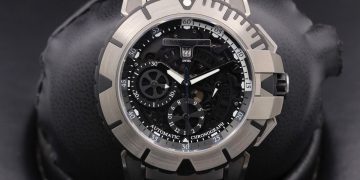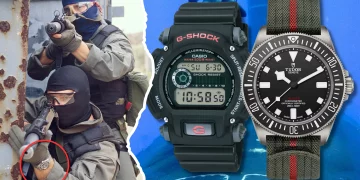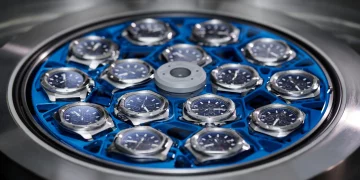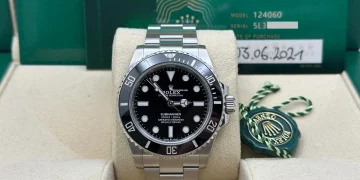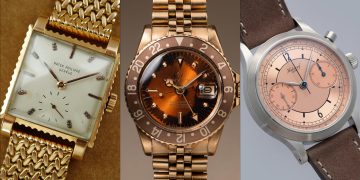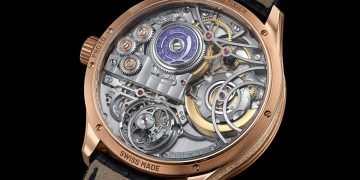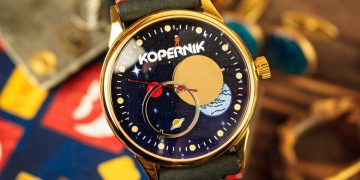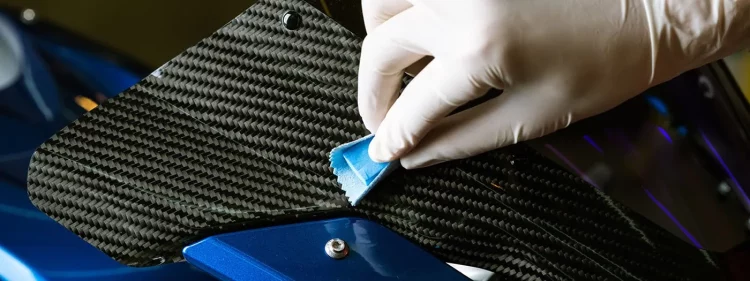High-end watches have long been symbols of craftsmanship, precision, and luxury. One of the most crucial elements that elevate these timepieces is the use of rare materials. These materials not only improve the durability and functionality of the watch but also enhance its aesthetic appeal, making it stand out in both design and performance. From precious metals to exotic ceramics and innovative composites, the materials chosen by top-tier watchmakers play a pivotal role in shaping the identity and value of the timepiece.
In this article, we will explore how high-end watches utilize rare materials to not only create more durable watches but also imbue them with unmatched beauty, luxury, and exclusivity.
1. Precious Metals: A Symbol of Luxury and Durability
Precious metals like gold, platinum, and palladium have been integral to high-end watchmaking for centuries. These metals are not just aesthetically pleasing but also offer significant durability and resilience.
Gold in Watchmaking:
- 18K Gold is the most commonly used gold in luxury watch cases. Its alloy composition (usually 75% gold) ensures both durability and an appealing shine. Gold is prized for its warm tone, which can range from the rich yellow gold to the rose and white gold variants.
- Durability: While pure gold (24K) is too soft for everyday wear, the alloys used in 18K gold ensure better scratch resistance and long-lasting performance, making it an ideal material for high-end timepieces.
- Aesthetic Value: Gold’s natural shine and lustrous quality offer a timeless aesthetic that speaks to wealth and craftsmanship. Watches with gold cases are always in demand due to their luxury status.
Platinum and Palladium: Ultimate Luxury Materials
- Platinum is a highly sought-after precious metal for watch cases. It is known for its heaviness, durability, and distinctive silvery-white sheen. Platinum’s natural resistance to corrosion makes it incredibly valuable in watchmaking.
- Palladium, a close cousin of platinum, offers similar corrosion resistance and a lighter weight. It’s also hypoallergenic, making it perfect for sensitive skin.
- Impact on Durability and Aesthetic Value: Both platinum and palladium are highly resistant to tarnishing and can withstand extreme wear and tear. These metals retain their appearance over time, ensuring that high-end watches maintain their luxury look for years.
2. Titanium: Light Yet Resilient
Titanium is a material that has gained significant traction in the luxury watch industry, particularly in sports or dive watches. Known for its lightness, strength, and corrosion resistance, titanium is a highly sought-after material for those looking for both functionality and style.
Why Titanium Is Ideal for High-End Watches:
- Lightweight but Strong: Titanium is stronger than steel but 40% lighter, which makes it ideal for those who wear their watch for long periods and value comfort.
- Scratch Resistance: Titanium is known for its resistance to scratches, ensuring the watch case remains pristine even with daily wear.
- Hypoallergenic: Titanium is naturally biocompatible, meaning it doesn’t cause allergic reactions, which makes it ideal for wearers with sensitive skin.
- Aesthetic Appeal: While titanium offers a more matte, industrial look, its subtle sheen and sleek finish give luxury watches a modern and contemporary feel.
Luxury Brands Using Titanium:
- Rolex has incorporated Titanium Alloy in some of their specialized models, such as the Oyster Perpetual Yacht-Master II, to offer enhanced comfort without compromising strength.
- IWC and Omega have also embraced titanium in their designs, combining the material’s benefits with precision watchmaking.
3. Ceramic: Resilience with Cutting-Edge Aesthetics
Ceramic has been one of the most groundbreaking materials in modern high-end watchmaking. Watches made from ceramic are known for their scratch resistance, lightness, and striking design. Ceramic allows brands to experiment with different colors and textures, resulting in a more innovative look that appeals to collectors and luxury consumers alike.
How Ceramic Improves Durability and Aesthetics:
- Scratch Resistance: Ceramic is extremely hard and resistant to scratches, ensuring that the watch retains its flawless finish for longer.
- Lightweight and Comfortable: Despite its hardness, ceramic is lighter than metals like steel or titanium, offering exceptional comfort for all-day wear.
- Aesthetic Flexibility: Ceramic allows watchmakers to offer watches in various colors like black, white, blue, or even rose gold, all while maintaining a uniform, smooth texture.
- Heat Resistance: Ceramic is also highly resistant to heat and corrosion, making it perfect for extreme environments.
Luxury Brands Using Ceramic:
- Hublot has incorporated ceramic into many of their Big Bang models, giving them a modern and sleek look while maintaining exceptional durability.
- Omega has used ceramic in its Seamaster and Speedmaster collections, which showcase the material’s potential in both functional sports watches and luxury designs.
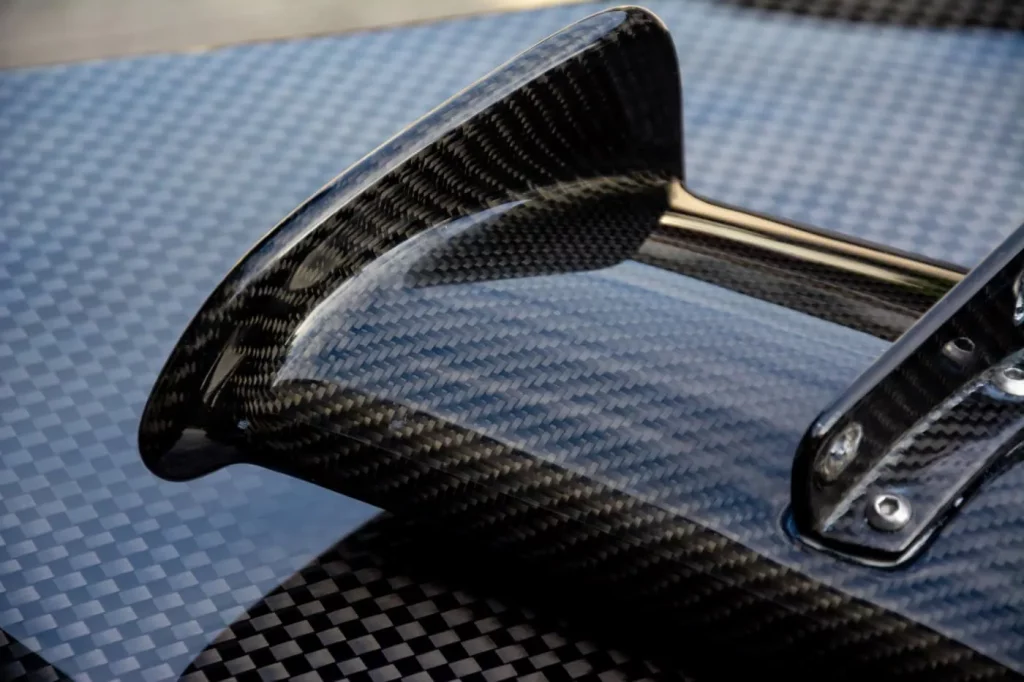
4. Carbon Fiber: The Ultimate in Strength and Modern Style
Carbon fiber is a material that has rapidly gained traction in high-end watchmaking due to its strength, lightness, and distinctive pattern. Carbon fiber’s unique design and advanced technology offer an impressive blend of luxury and performance.
Why Carbon Fiber Is a Game-Changer:
- Incredible Strength and Lightness: Carbon fiber is known for being extremely light yet incredibly strong, making it an ideal material for watches that need to be both durable and comfortable.
- Resistance to Scratching and Corrosion: Like ceramic, carbon fiber is incredibly resistant to scratches, and it won’t corrode or tarnish over time.
- Modern Aesthetics: The pattern of carbon fiber—often resembling a grid or weave—gives the watch a futuristic, rugged look that stands out among traditional metals.
- Customization: Carbon fiber is often combined with other materials, such as titanium or ceramic, to further enhance strength and visual appeal.
Luxury Brands Using Carbon Fiber:
- Richard Mille is renowned for incorporating forged carbon into their watch cases, using the material for its strength while achieving a sleek, modern aesthetic.
- TAG Heuer and Hublot also use carbon fiber extensively in their sports and limited-edition models, offering an ultra-modern look combined with excellent performance.
5. Sapphire Crystal: Clarity and Protection
Sapphire crystal has become the standard in luxury watchmaking for protecting the dial and improving visibility. Made from synthetic corundum, sapphire crystal is both incredibly clear and tough, offering the best protection for the dial without sacrificing aesthetic appeal.
Why Sapphire Crystal Is Essential for High-End Watches:
- Scratch Resistance: Sapphire crystal is one of the hardest materials in the world, second only to diamond. This makes it nearly impossible to scratch, ensuring that your watch’s face remains flawless for years.
- Optical Clarity: Sapphire crystal offers exceptional clarity, ensuring a clear and unobstructed view of the watch face, whether you have a simple dial or a complicated chronograph.
- Durability: Sapphire crystal’s resilience to scratching, impact, and UV degradation ensures that your watch will maintain its beauty and functional integrity even under challenging conditions.
Impact on Aesthetic Value:
- The use of transparent sapphire crystal allows luxury brands to showcase their intricate movements through transparent case backs, offering both protection and a view into the watch’s inner workings.
6. High-Tech Alloys: Combining Strength, Lightness, and Flexibility
High-end watchmakers are also turning to innovative alloys to enhance the durability and performance of their timepieces. Alloys like Sedna Gold (Rolex’s proprietary blend of gold, copper, and platinum), Titanium Alloys (like Ti-6Al-4V), and Nivachron (an anti-magnetic material used by brands like Omega) have been developed to offer enhanced strength and corrosion resistance while maintaining a high level of luxury appeal.
The Advantages of High-Tech Alloys:
- Durability: These alloys are often lighter than traditional metals, but stronger and more resistant to scratches and wear.
- Customization: High-tech alloys can be easily shaped into complex, exquisite designs, which allows watchmakers to create distinctive and detailed timepieces.
- Magnetic Resistance: Alloys like Nivachron provide magnetic resistance, ensuring that mechanical movements remain unaffected by modern technology or electronic devices.
Conclusion: The Art and Science of High-End Watchmaking
The use of rare and innovative materials in luxury watches enhances both the performance and visual appeal of these timepieces. From precious metals that convey luxury to ceramic and carbon fiber that offer strength and modernity, high-end watches are increasingly incorporating advanced materials that allow them to excel in durability, aesthetics, and functionality. These materials are not just about building a more resilient timepiece but also about creating watches that are truly unique, capable of withstanding the test of time in both style and performance.
As the watchmaking industry continues to evolve, we can expect even more exciting innovations in material science, pushing the boundaries of what a luxury watch can be. For collectors and watch enthusiasts, these innovations offer an exciting glimpse into the future of horology.



